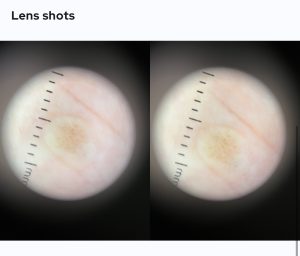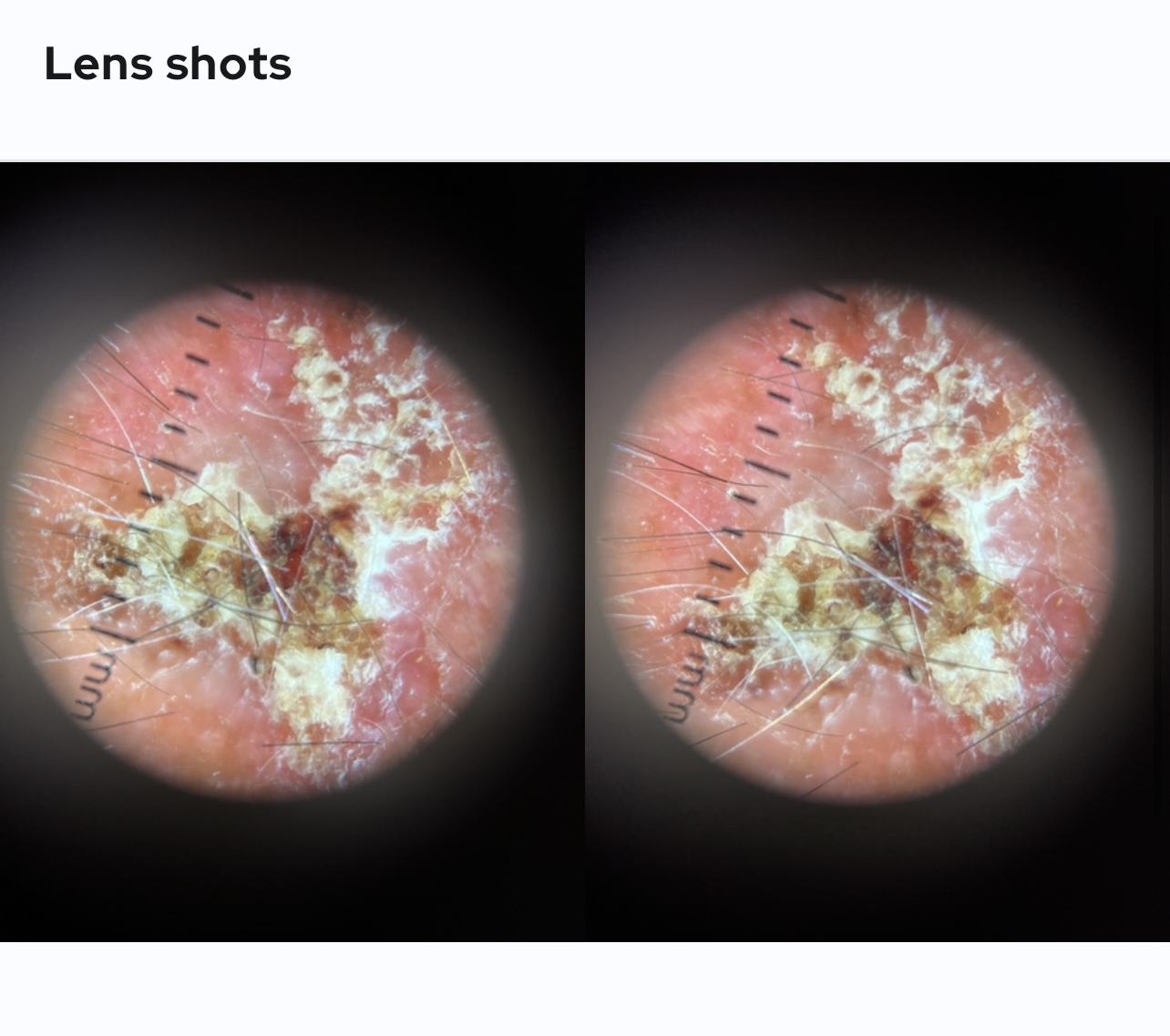Using a dermatoscope to assess blemishes is a routine part of what I do. It allows me to see each blemish in much greater detail, which helps me better understand what I’m looking at.
That said, I want to be clear that I don’t diagnose suspicious lesions. That responsibility lies with dermatology specialists and GPs. What I do is assess whether I’m comfortable treating a particular blemish based on what I can see through the scope.
In this blog, I’d like to share a few recent client cases with you, to give you an idea of what I see when I look through the dermatoscope and which types of blemishes might need further investigation.
One example is a blemish I reviewed on the scalp of a gentleman who came to see me for removal. On closer inspection, the appearance of it raised some concerns, so I referred him to dermatology for a closer look. The report came back confirming it was a very inflamed keratosis. In this case, treatment would involve either a cream like Efudix, which needs to be prescribed by a GP, or cryotherapy, which also has to be carried out by a healthcare professional in this case due to the current condition.
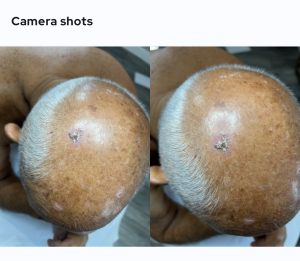
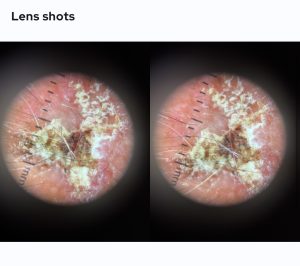
The same gent also presented with this blemish below on his back, believing it to be a Seborrheic Keratosis, again on viewing I was not happy with the appearance of it and we sent it off to dermatology. The results came back as potential Bowens disease or Squamous Cell Carcinoma, both of which need medical attention.
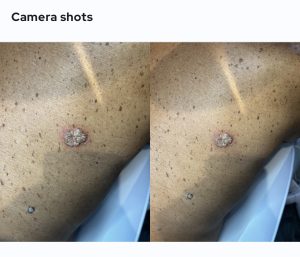
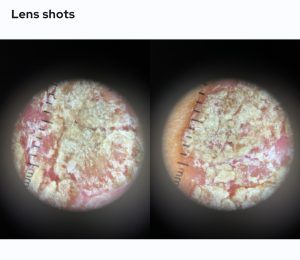
This really highlights the importance of using a dermatoscope, but also the need to work with care and caution whenever I assess the skin and any blemishes that might be treated. Not every blemish looks suspicious, many are completely normal and safe to treat, but this just goes to show why my role is so important, especially when it comes to knowing when something might need to be looked at more closely.
Lastly, I wanted to show you an example of when treatment can go ahead. A lady came to me with a mole on her hand. She was concerned it had started to grow, so she visited her GP first, who felt it was fine. We still sent it off to dermatology for further checks, and it came back as benign and safe to treat.
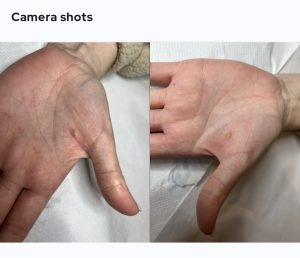
Looking at it through the lense of the dermatascope.
